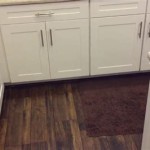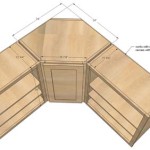Reinvigorating Your Kitchen: A Comprehensive Guide to Painting Your Kitchen Cabinets
Over time, even the most well-maintained kitchens can start to show signs of wear and tear. One of the most noticeable areas that can age prematurely is the cabinetry, which can become dull, scratched, or outdated. However, with a little time and effort, you can rejuvenate your kitchen cabinets with a fresh coat of paint, giving them a new lease on life.
This guide will provide you with all the essential information you need to paint your kitchen cabinets successfully, covering everything from preparation to the final touches. By following these steps, you can transform your kitchen into a more stylish and inviting space without breaking the bank.
Essential Aspects of Painting Kitchen Cabinets
1. Preparation is Key
Thoroughly preparing your cabinets before painting is crucial for ensuring a professional-looking and long-lasting finish. Start by removing all cabinet doors and hardware. Clean the surfaces thoroughly with a degreaser to remove any dirt, grease, or wax. Sand any rough edges or imperfections with fine-grit sandpaper, and fill in any holes or dents with wood filler.
2. Choose the Right Paint
Selecting the appropriate paint is essential for achieving a durable and aesthetically pleasing result. Consider using a high-quality cabinet-specific paint designed to adhere to the slick surfaces of cabinets. Choose a finish that aligns with your desired look, such as a matte, satin, or semi-gloss finish.
3. Prime for Success
Priming the cabinets before painting provides a smooth base for the paint to adhere to. Use a high-quality primer specifically designed for cabinets, following the manufacturer's instructions for application.
4. Paint with Precision
When painting, use a high-quality brush or roller for a smooth, even application. Apply thin coats, allowing ample drying time between each coat. For best results, apply at least two coats of paint.
5. Embrace Detail
Pay meticulous attention to the details, including the edges, corners, and hardware. Use a small brush for intricate areas, and apply several thin coats to avoid drips and runs.
6. Protect and Preserve
Once the paint has dried completely, apply a protective topcoat or sealer to shield the cabinets from wear and tear. This additional layer will enhance the durability of your painted cabinets.
7. Reinstall with Care
When reinstalling the cabinet doors and hardware, handle them with care to avoid damaging the fresh paint. Use a soft cloth or gloves during the process.
Additional Tips for Success
- Test the paint color in an inconspicuous area before painting the entire cabinet.
- Ventilate the workspace adequately during painting and drying.
- Allow ample drying time between coats to prevent smudging or peeling.
- Consider hiring a professional if you lack experience or the necessary tools.

How To Prep And Paint Kitchen Cabinets Lowe S

Should I Paint My Kitchen Cabinets Lily Ann

How To Paint Your Kitchen Cabinets In Six Easy Steps The Home Depot

How To Paint Kitchen Cabinets In 7 Simple Steps

A Step By Guide To Painting Kitchen Cabinets With Kilz Primer Blog

The Best Way To Paint Kitchen Cabinets No Sanding Palette Muse

Step By How To Paint Your Kitchen Cabinets

How To Paint Kitchen Cabinets Step By With

What Color Should I Paint My Kitchen Cabinets

How To Paint Kitchen Cabinets In Four Easy Steps For Really Smooth Results Express Co
Related Posts








